A sourdough starter is a thick mixture of flour and water that becomes bubbly, thanks to the fermentation process. It is used to create delicious sourdough bread, sourdough pancakes with discard, cinnamon rolls from sourdough starter, waffles, quick sourdough pizza crust, and even sourdough discard cake! In today’s blog post, we will be discussing the best ways to store sourdough starter (refrigerating, dehydrating, and freezing) so you can continue using it for many years to come. Let’s get started!
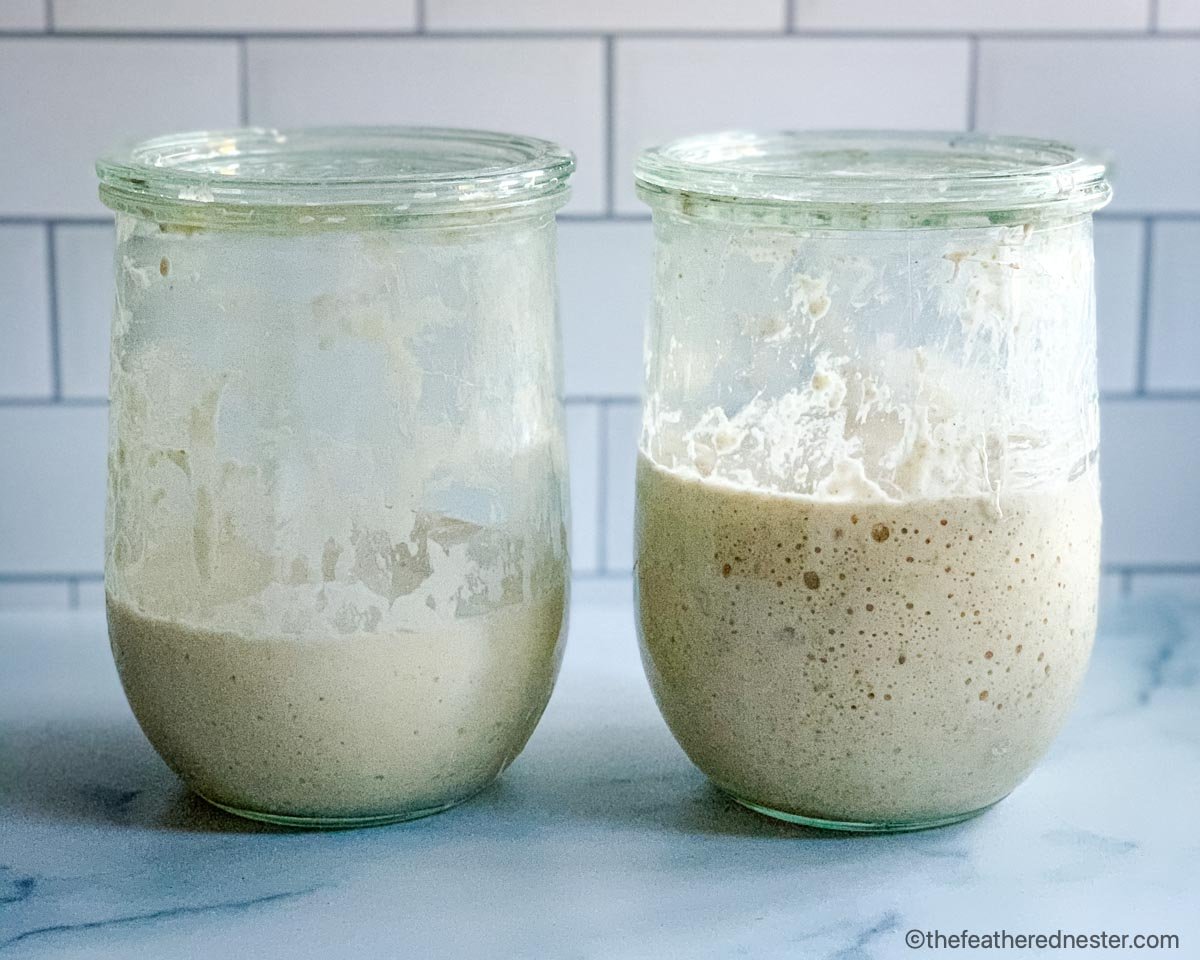
If you are lucky enough to have an active sourdough starter, then you will want to learn how to store it properly so that you can keep it alive and use it often.
If you don’t have one, it is easy to make your own sourdough starter. Just head to The Feathered Nester’s make your own sourdough starter with step-by-step instructions and yours could be ready in a week.
Content Covered Here
Why Store A Sourdough Starter?
A sourdough starter is a living thing and, like all living things, it needs to be fed in order to stay alive. If you are not planning on baking sourdough bread or using your starter for another recipe within the next week or so, then it is best to store your starter in the fridge.
Refrigeration will slow down the fermentation process and prevent your starter from becoming too sour. Additionally, storing your sourdough starter in the fridge will prevent needless feedings when you are not actively cooking or baking with sourdough.
So, now that we know why we should store our sourdough starter, let’s talk about how to do it!
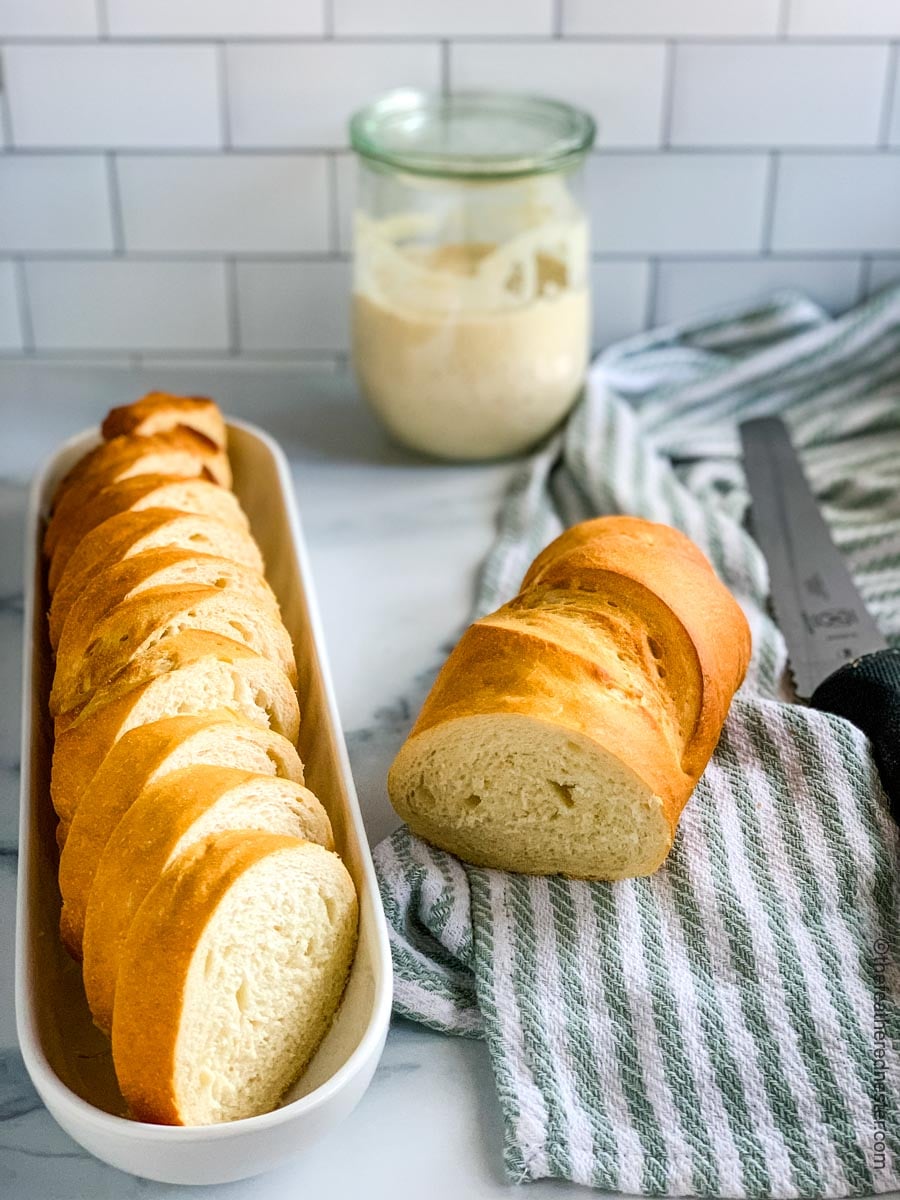
How To Store The Sourdough Starter In The Fridge
The best way to store a sourdough starter in the fridge is to place it in a glass or plastic container covered with a lid. The lid should not be air-tight as it needs a little air but we do not want pests getting into the starter.
Be sure to label your container with the date that you stored it so that you can keep track of when it needs to be fed.
To feed your sourdough starter, simply remove it from the fridge discard (or use) all but 1/4 cup (50-60 grams) of starter, and add equal weights of flour and water. I recommend discarding and only feeding 1/4 cup of starter because you’ll want a manageable size of starter to feed so that you aren’t wasting flour in a feeding. Also, after feeding 1/4 cup of starter you’ll have approximately 1 cup of active, bubbly starter ready for most recipes.
Since water weighs more than flour, feed it twice as much flour as water. Here’s my simple formula: ¼ cup of starter, ¼ cup of warm filtered water, and ½ cup of unbleached all-purpose flour.
Stir well and then let it sit at room temperature for a few hours before returning it to the fridge. The starter can live for several weeks in the back of your fridge until you are ready to wake it up by feeding it.

Keeping a Discard Jar
Since I bake infrequently, I keep a discard jar in my refrigerator. Discard recipes are perfect for foods that don’t need to rise a lot, such as pancakes, waffles, and pizza.
Every few weeks, I add a tablespoon or two of water and two to four tablespoons of flour to the discard jar to feed it and keep it from getting too sour.
How To Store A Sourdough Starter Long Term
You’re probably wondering where to store the sourdough starter if it’s not in use. After all, it’s a living thing that needs flour and water.
Let’s say you’re going on an extended vacation. Or you decided to cut back on your carbs or go on a keto diet. All of those things have happened to me.
I’ll tell you how to store sourdough starter when you’re not using it for a while.
If you are not planning on using your sourdough starter for a long period of time, then you can freeze or dry (dehydrate) it. This will prevent the starter from going bad and preserve it for later use. It is also helpful to keep keep a backup in case something happens to your starter. It is much easier to rehydrate or defrost a starter than it is to start a brand-new sourdough starter!
When frozen, sourdough starter can last for several months. When dehydrated, it can last for over a year. However, it is best to use a frozen or dehydrated sourdough starter within 3-6 months for the best results.
Below are the steps on how to freeze and dry out your sourdough starter for storage.
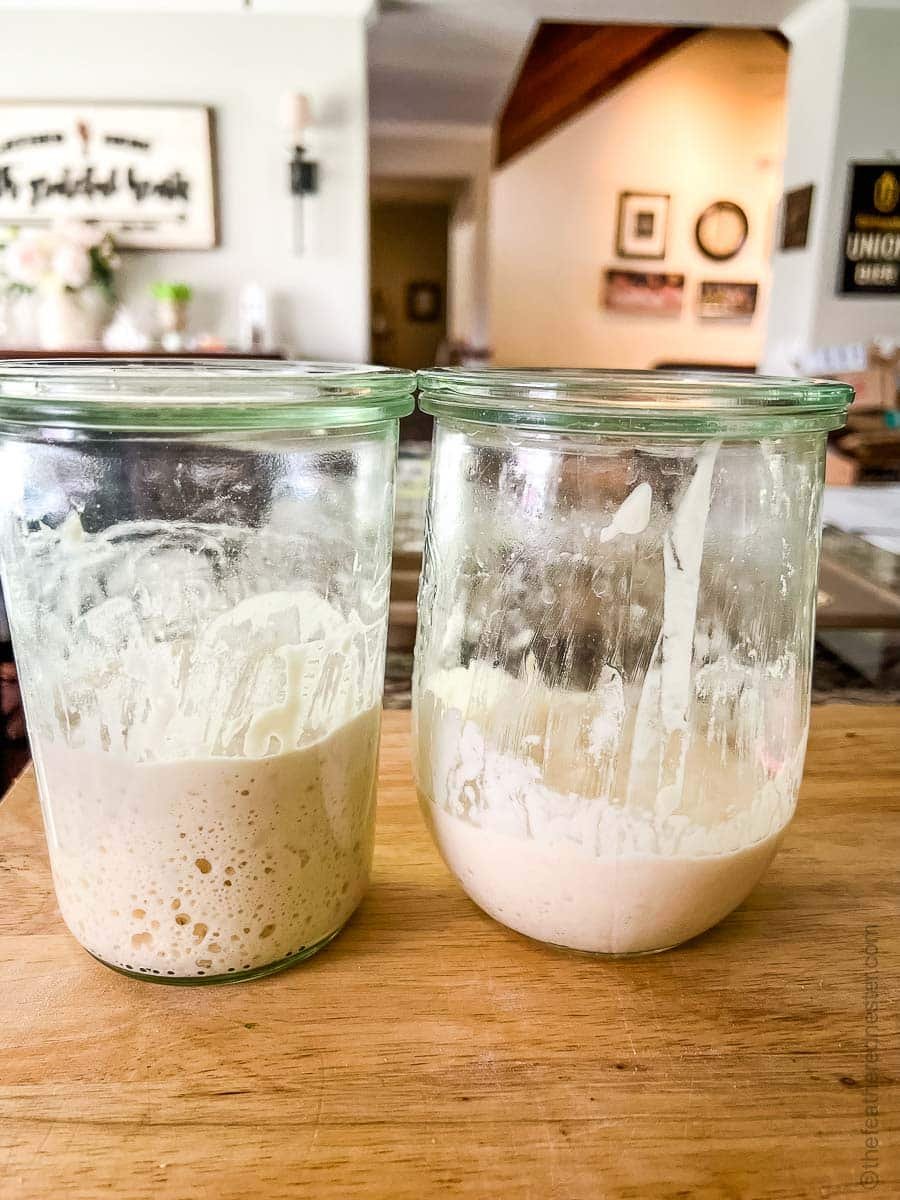
Freezing Sourdough Starter
Another way to store your sourdough starter long-term is to freeze it. To do this, simply place your starter in a glass or plastic container with a tight-fitting lid. This will keep it safe from frost.
Be sure to label your container with the date that you stored it so that you can keep track of when it needs to be fed.
When you are ready to use your starter again, simply thaw it overnight in the fridge and then feed it as usual.
Dehydrated Sourdough Starter
One final way to store your sourdough starter is to dehydrate it.
To do this, simply spread your sourdough starter on a dehydrator tray and dehydrate it at 115º Fahrenheit for 24 hours.
Or, spread it thinly on a sheet of parchment paper on a baking sheet.
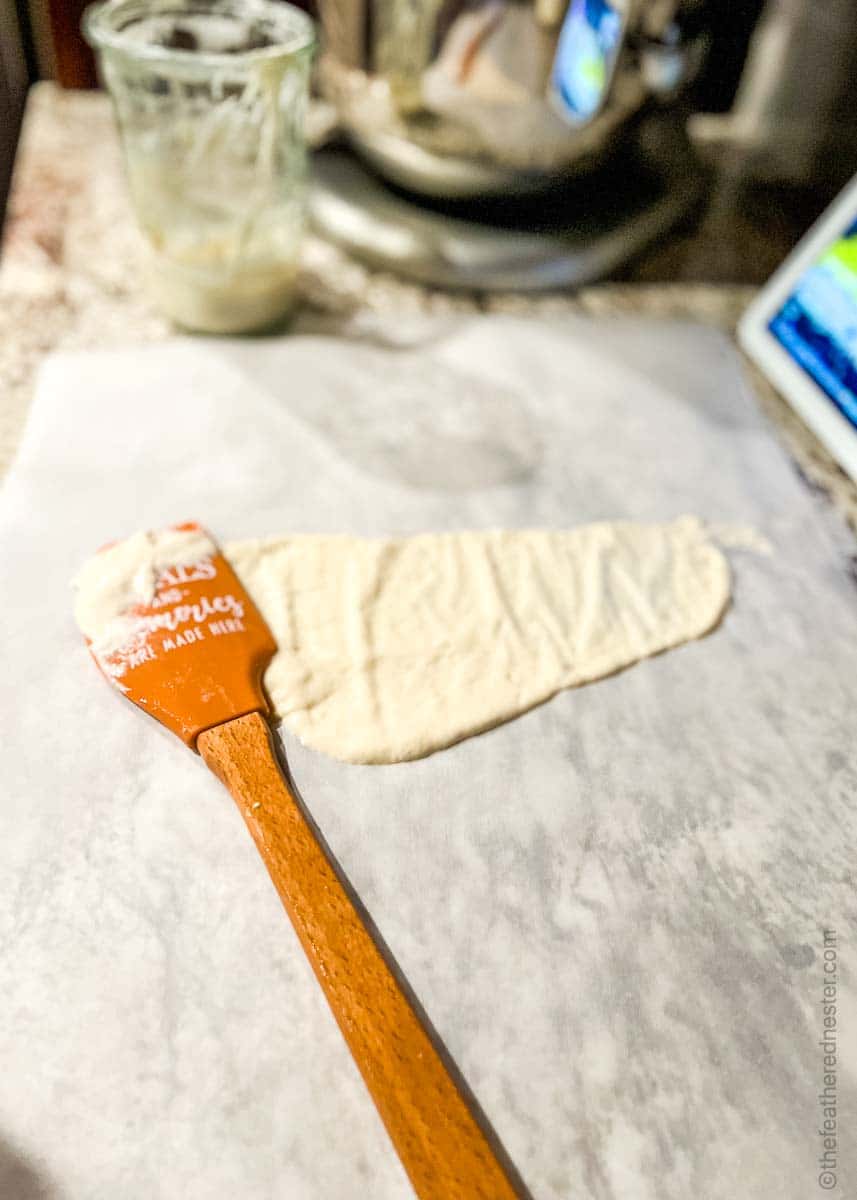
Let it dry overnight. I recommend placing the baking sheet in the oven (turned off) overnight with the light on (if possible).
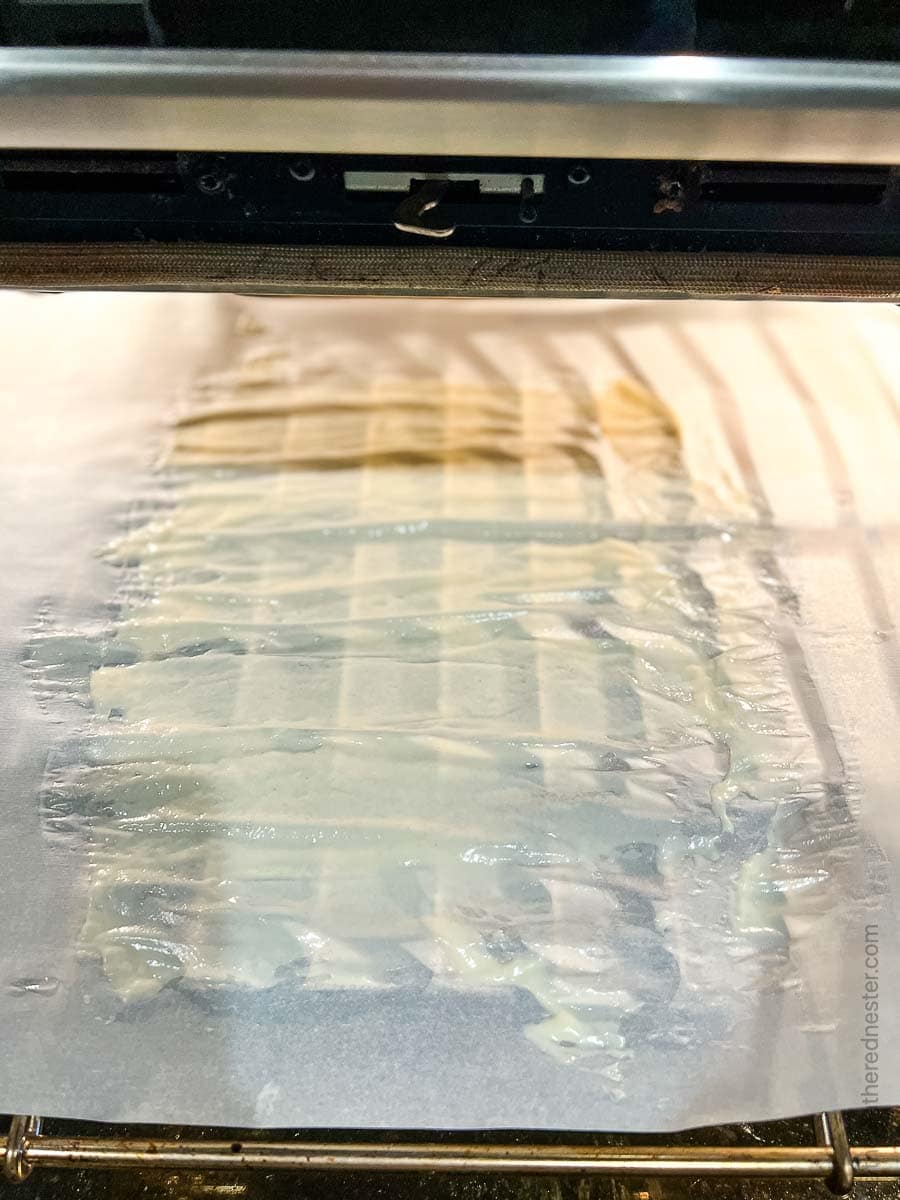
In about 12 hours or so, you will have a dehydrated sourdough starter to break into pieces and store.
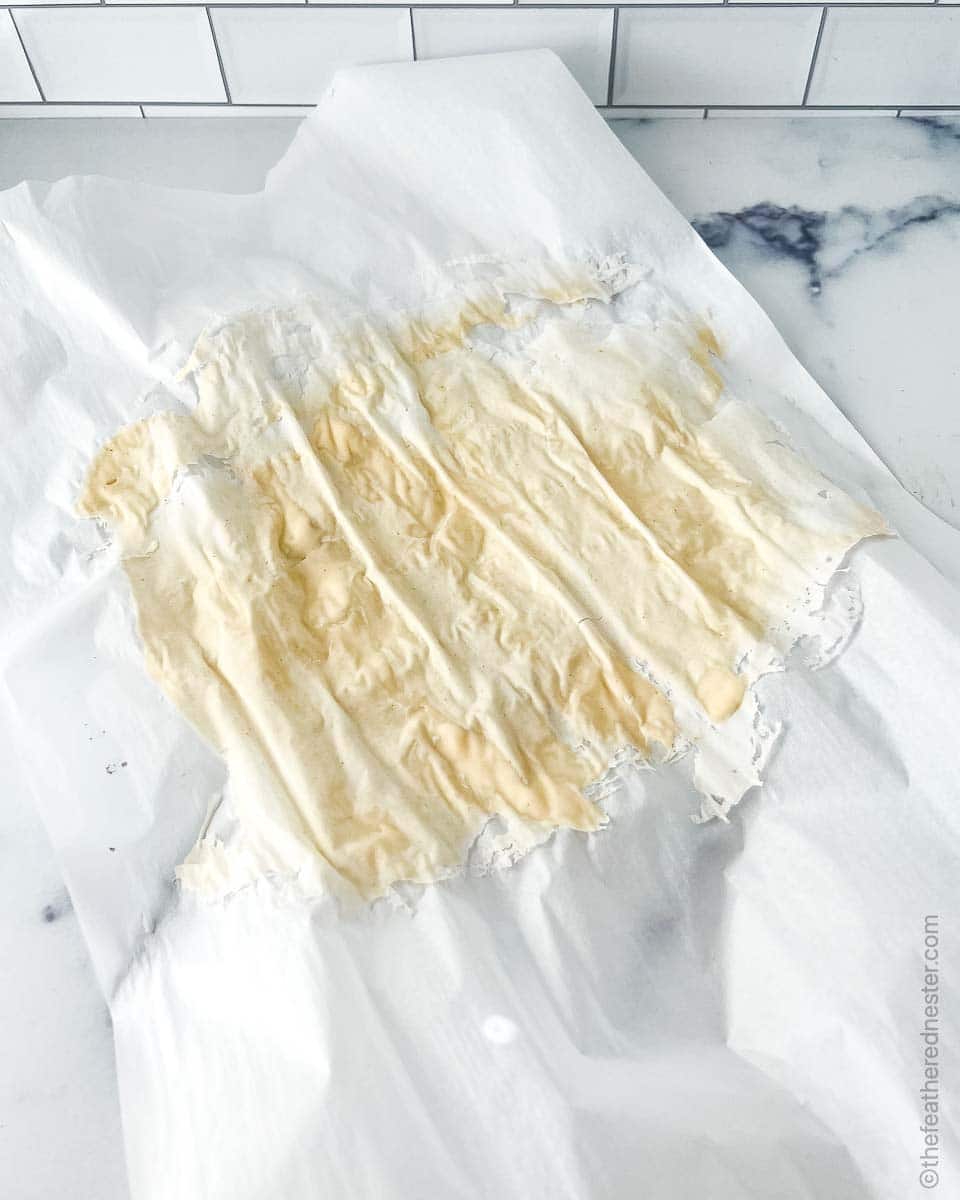
Storage Tips for Dehydrated Starter:
Once it is fully dried, you can store it in a glass or plastic container with a tight-fitting lid.
Write on the container or add a slip of paper with the weight of measurement of what you added to the container.
Measure or weigh the starter before drying. That way you will know how much water and flour to feed it when you rehydrate the starter.
Use no more than ½ cup of sourdough starter for drying out sourdough starter.
Rehydrating Dried Sourdough Starter Tips:
To rehydrate your sourdough starter, add 20 grams of dehydrated starter flakes to a glass jar. Cover with 1/4 cup of warm, filtered water (60 grams) and let sit for an hour. Stir 1/2 cup (60 grams) of all-purpose, unbleached flour. The mixture should be very thick and the flour completely absorbed.
Why is my sourdough starter not rising and other issues are common questions that new and experienced sourdough bakers alike ask. Our post will help you troubleshoot some of the most common problems that sourdough starters face, and offer solutions to get your starter back on track.
Frequently Asked Questions
If your sourdough starter has been stored in the fridge for too long and has become inactive, there are a few things you can do to revive it. First, remove it from the fridge and add equal parts flour and water. Stir well and then let it sit at room temperature for a few hours before returning it to the fridge.
If it has a gray or dark layer on top, remove that before feeding. Also, drain off any excess liquid on top of the sourdough starter.
If your sourdough starter is very sour, it is probably still active and can be revived. Take off the top layer and save about ¼ cup of it. Then feed it with ¼ cup of warm water and ¼ cup of all-purpose flour.
See if it doubles in size in 6 hours. If not then I recommend keeping it at room temperature and feeding it daily until it is bubbly and doubles in size within 6 hours. After that, it can go in the fridge for weekly feedings.
Yes, you can use the sourdough starter straight from the fridge. However, you may need to add a little more water to the starter to make it more liquid. Also, you may want to let the starter sit at room temperature for an hour or so before using it to help it become more active.
The answer to this question depends on a few factors, including how often you feed your starter and how warm or cool your kitchen is. In general, however, most sourdough starters can be stored at room temperature for 2-3 without going bad. If you plan to keep your starter out of the fridge for more than a few days, however, you should consider feeding it daily to keep it healthy.
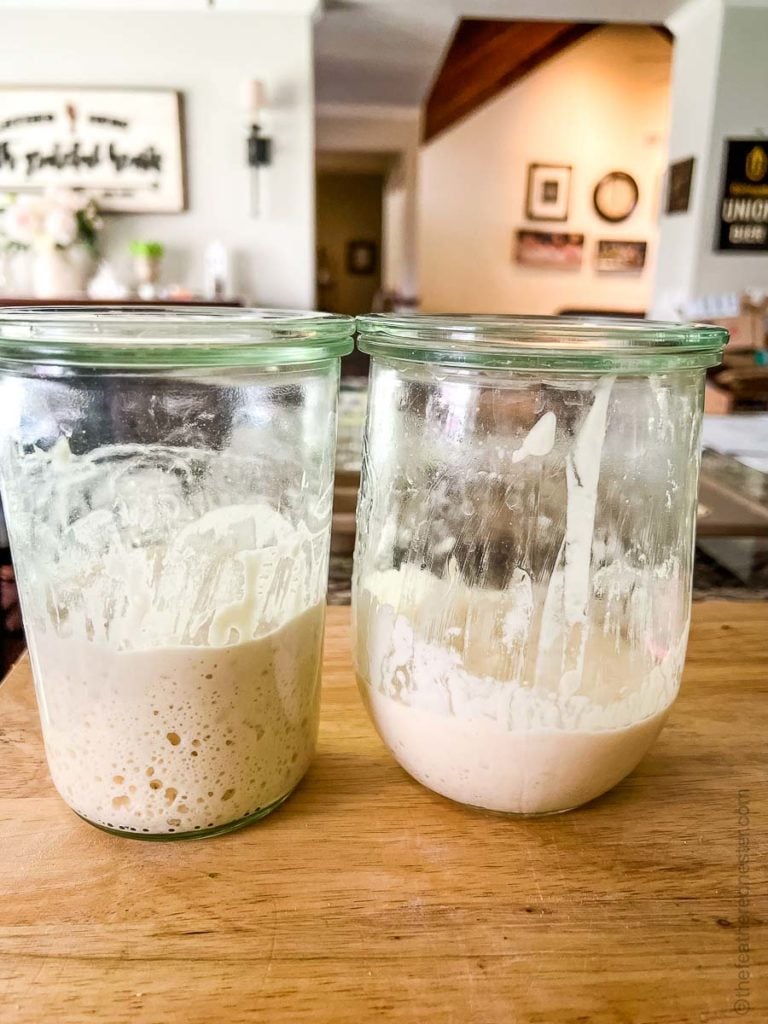

Denise Bonetti says
Hello, I sent a message thru another starter recipe so I spillover if I duplicate any questions. So, according to this recipe, for weekly feedings, I take a 1/4 cup of starter out, feed IT with the water/flour amounts, let it sit out a couple hours, then mix it back in with the original starter..is that correct? Also, what should I be doing with the thin layer of liquid that firms on top? Discard before feeding or mix it in? Thanks in advance for your help!!
Danielle - TFN Team Member says
Hi! Thanks for asking! You will want to discard all but 1/4 cup of starter. How you discard depends on your preference. Some people choose to throw the discard away (and if you are making a starter from scratch you’ll want to throw it away in the beginning anyways as it isn’t an active starter yet). If you do have an active starter you can choose to keep a discard jar in your fridge and use this for discard recipes. I personally do this as I don’t like to waste! You won’t want to mix the discard back in as the point of discarding so that you are feeding a smaller volume of starter and thus able to use a lot less flour. Before a feeding you’ll want to dump the liquid on top
Rebecca says
My starter seems to get “tough” and has a crust that sometimes turns a little grey. What am I doing wrong? I’ve been using 1/2 wheat and 1/2 white flour, with 1/2 cup flour and 1/4 cup water and feeding almost daily. It sits on the counter, and I’ve been discarding the crust on top. Any suggestions?? Thank you!!!
Gianne - TFN Team Member says
Have you used this starter? We usually recommend using unbleached all-purpose flour for making starters.
Maureen says
I baked my first loaf of bread (overnight sourdough) and got rave reviews. I placed my starter in the fridge and have kept it covered. I want to make more bread in a few days. When I take it out of the fridge, do I discard 1/4 cup and then add 1/4 cup of water and 1/2 cup of flour to get it activated again? Thank you for any help.
Bec @ The Feathered Nester says
Hi Maureen!
Take what you need for baking out of the jar in the fridge, then feed it. Hope this helps!
Anne says
Hello. I’m in the same situation. I made my first loaf of sourdough and stored the starter in the fridge. Now I’m wanting to make another loaf. So I remove however much starter I need and immediately begin the bread making process and feed what? Feed the starter in the jar or the starter I’m using for bread? Sorry, I’m very new to this. Thank you!
Gianne - TFN Team Member says
When you’re ready to bake another loaf and your starter has been stored in the fridge, the first thing to do is reactivate it. That means taking it out of the fridge, letting it come to room temperature, and feeding the starter in the jar first. This wakes it up and gets it active again before you use it for baking.
Once it’s bubbly and has doubled in size (usually after 4–12 hours depending on temperature), you’ll then remove the amount of starter you need for your bread recipe, and feed whatever is left in the jar to maintain it. So, to clarify: feed the starter in the jar first, then use the risen and active portion to bake with.
Felicia prevatt says
If I use this exact starter recipe you have listed and bake the starter dough loaf bread you have listed what do if I want to store the rest of the starter in the refrigerator immediately after baking the first bread from it? Do I feed it let it sit out a few hours then refrigerate? After I bake the first loaves I just want to bake the sourdough loaf weekly at that point. So I would need to refrigerate in between after feeding? Like could I feed it like normal let it stay out a few hours then refrigerate it at that point then in one week when I wanted to bake again pull it out discard some and refeed for the recipe? That is the part that confuses me. Thanks for any help you are willing to give
Renae says
You can pull your starter out of the fridge, feed it, then return it to the fridge. You do not have to leave it out for a few hours, though I do recommend that if you aren’t baking with it at least once a month. You can also refrigerate your starter between bakings and only feed it weekly.
Ellen says
So I’ve used my starter for the first time. If I choose not to make anything for a while, put it in the fridge. I have about 2 cups of starter left over. Is that normal??:) and when I go to use it how much flour/ water should I add to this. Or do I discard more before putting it in the fridge?:) sorry for the confusion.
Renae says
You should have less than 1 cup of starter in your starter jar if you have been “discarding” it during the process. When feeding it, you “discard” about 1/4 – 1/2 cup or use what you need, then use equal amounts of starter, water, and flour if you use a weighted method for feeding. If using measuring cups, then you would use equal amounts of starter, water, and flour (flour “weighs” less than water or starter because they are liquid). Since you have excess, as long as your starter is active and bubbly (and hopefully at least a week old), I would keep a backup on hand by dehydrating it or freezing it at least 1/2 cup. And give some to a friend or neighbor who would like one. Get your starter down to about 1/2 cup so that at the next feeding, you can use or discard about 1/4 cup, and feed it 1/4 cup of water and 1/2 cup of flour or equal weights of each). If you keep it in the fridge, you would feed it weekly. Let me know if you still have any questions!